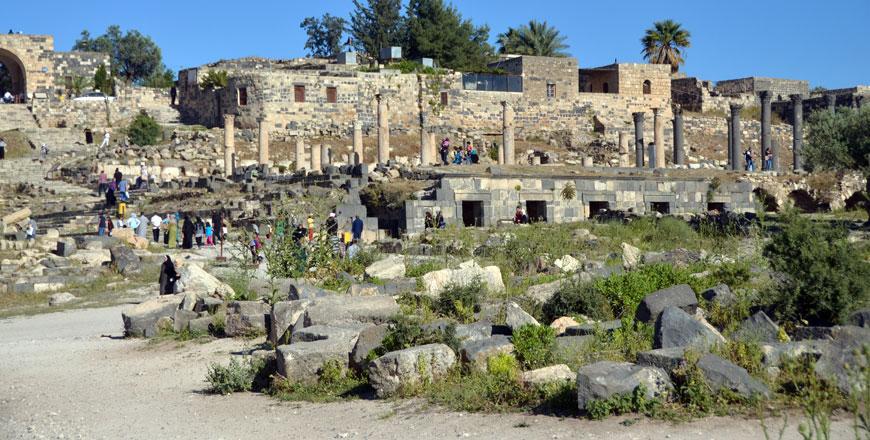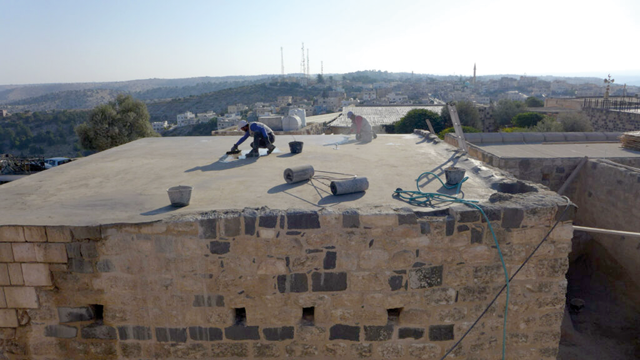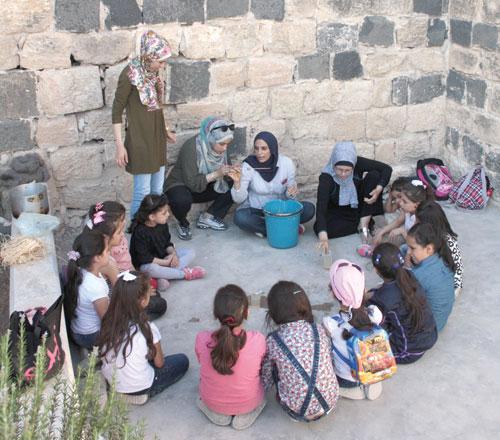You are here
German research continues in ancient city of Gadara
By Saeb Rawashdeh - Aug 08,2019 - Last updated at Aug 08,2019

The ancient city of Gadara is located on the top of a hill, more than 100km north of Amman (JT file photo)
AMMAN — Over the course of the last 15 years, the Orient Department of the German Archaeological Institute in Berlin under the direction of Claudia Bührig has been “very active” in the Hellenistic-Roman city of Gadara, present-day Umm Qais.
The ancient city is located on the top of a hill overlooking the surrounding landscape, more than 100km northwest of Amman.
The earliest evidence for settlement activities on the hilltop of Gadara dates back to the second half of the third century BC, Bührig told The Jordan Times in a recent e-mail interview. The abundance of Egyptian and Greek imported pottery and stamped amphorae indicates ‘‘a small, but nevertheless flourishing base on the hilltop’’, she added.
‘‘The fortification that dominates the appearance of the settlement hill today was most likely built around 200 BC, presumably on the initiative of the Seleucid ruler Antiochos II,’’ said Bührig, adding that the fortress was visible from far away. In the second century BC it set a clear sign of the Seleucid dominion over the rest of the region, a demonstration of power by the new rulers, she continued.
‘‘The intention of our research was and still is to determine the processes in the change from a closed, representative and strategically important Seleucid fortress to an open, expansive Roman-Byzantine city,” Bührig underlined, noting that since 2010 excavations have been extended by yearly archaeological surveys.
Furthermore, research activity in Gadara, and also in the surrounding region, focuses on the settlement development in fertile north-eastern Jordan, she said, adding that the research area of the “Gadara/Umm Qais Hinterland Survey” extends from the Yarmouk Valley in the north, to the modern village of Mansura in the east, to the slopes of Wadi Al Arab in the south, and finally joining the high plateau of the Ard Al Ala in the west.
Regarding future plans, the institute’s recent activities have given them important insights into ancient Gadara and its hinterland, she elaborated, noting that on the one hand there are the new excavations on the hilltop, which began in the summer of 2018, and on the other hand there is the “Gadara/Umm Qais Hinterland Survey”.
Related Articles
AMMAN — The collaboration between the Department of Antiquities (DoA) and the German Archaeological Institute (DAI) has extended its i
AMMAN — Ancient Gadara (modern Umm Qais) had a strategic location between the
AMMAN — An exhibition organised for the Atharafoqa area, in the northern part of Umm Qais, was the crown jewel of seven years of cooperation



















